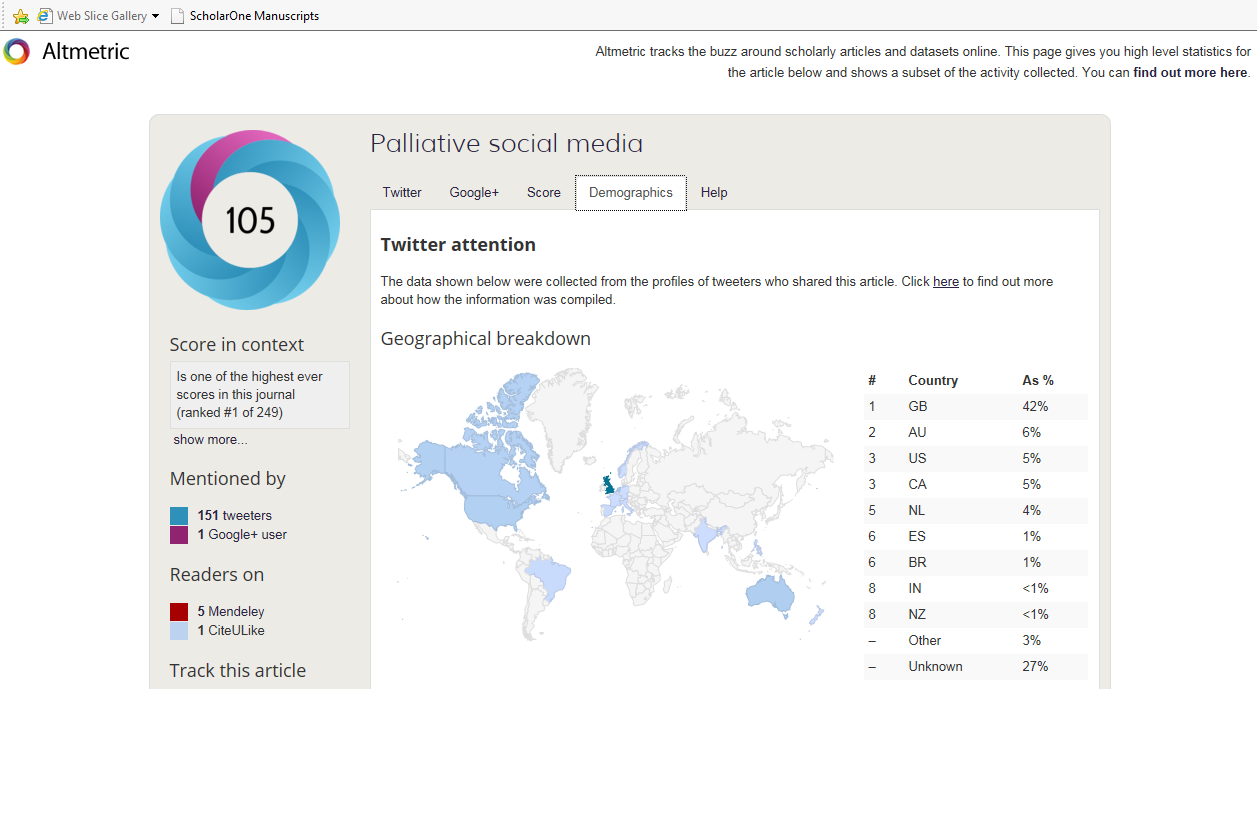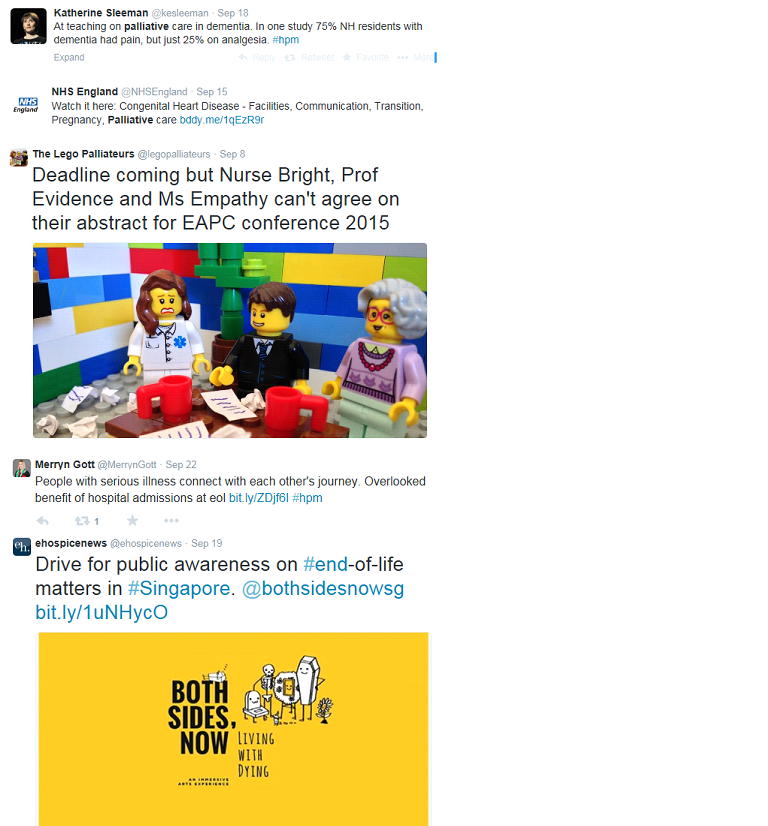You may have noticed a small badge at the end of research articles in BMJ Supportive and Palliative Care and other journals’ online publications.
This is an Altmetric badge, and it measures an article’s mentions in the social media world, for instance Twitter, Facebook and Google+. But Altmetric also tracks newspapers, government policy documents and other sources for mentions of scholarly articles. How does it work and does it affect you?
Article level metrics:
Altmetric is one of a number of online tools that compile article level metrics. Traditionally, the scientific community has measured the reach of a published article at journal level. The most commonly used metric is the well known Impact Factor which measures the average number of citations of recent articles published in a journal. Increasingly however, the environment and ecosystems of how research is disseminated is expanding and becoming more diverse. Traditional metrics have not been able to keep pace with these ever evolving ways of spreading information. As a result, there has been a desire to get an alternate breakdown of an article’s performance using ‘article level metrics’.
Sources:
Online conversations around research are collected by Altmetric, combining a selection of online indicators (both scholarly and non-scholarly) to give a measurement of digital impact and reach. Altmetric targets this commentary by tracking, collecting and measuring large amounts of data collected from all of the places where scientists, patient advocates, journalists, nurses, engineers and members of the public talk about science online. This allows authors and publishers to see what people are saying about a scholarly paper and can tell them how much attention a paper is receiving relative to their peers. It is a very fast way of receiving feedback, compared to the more traditional mentions the article may receive from a letter to the editor. But beware that it also gives instant access to fairly uncensored commentary, so one of the impacts may be that article authors are directed towards harsh or dismissive criticism, and worse even may see abusive messages on social media about their work.
Uses:
It can be interesting to click on some of the breakdowns that Altmetric provide for your article, for instance on the rankings (if you are competitively minded) or where in the world your article has been accessed most (see image below).
In conclusion:
The public, journalistic media and scientists are increasingly discussing articles online, but on social media sites, rather than on publisher’s sites. There is huge value in being able to see what your peers and people in other fields have said about an article, but there is potential that the quality of commentary is far more uncensored and more immediate than a more traditional citation in a journal article. For sensitive and sometimes divisive research topics within palliative care, this is of particular relevance.
Some Tweets we recently saw that you may find interesting:


